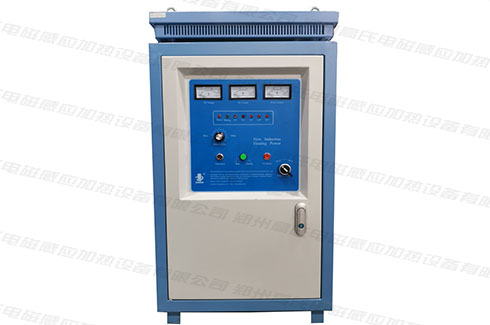Machine tool parts after heat treatment by high-frequency induction heating equipment must not only meet the performance requirements of use, but also have feasibility and economy. Therefore, before the design and production of machine tool parts, it is necessary to consider its material and structure. It is necessary to select materials with better performance, put forward reasonable and correct technical requirements, formulate correct heat treatment process steps, and operate in strict accordance with standard process requirements. Improve the production efficiency and qualification rate of parts. According to the technical performance requirements of machine tool parts, its heat treatment process includes the hardenability, hardenability, tempering stability, oxidation and decarburization of parts, etc.
Hardenability refers to the higher hardness that the production material steel of machine tool parts can achieve after quenching heat treatment, that is, the hardening ability of steel, which mainly depends on the carbon content of steel. The higher the carbon content, the higher the hardness of the steel after quenching, so for parts that require higher hardness, we can choose medium carbon steel or high carbon steel as the production material.
The hardenability of the part refers to the depth of the hardened layer that the part can obtain when it is quenched by high-frequency induction heating equipment. This property is possessed by the steel itself, but steels of different sizes and shapes have different hardenability capabilities. Under specified conditions, the deeper the hardened layer of the steel after quenching, the harder it is. The better the sex, the worse it means. Due to the different sizes of the parts, the depth of the hardened layer will be different, which will affect its surface hardness during quenching. Therefore, when selecting materials, alloy steel with better hardenability can be used for parts with large sizes and complex shapes. In general, the hardenability of the production material steel is the main basis for us to formulate the parameters of the heat treatment process steps of the parts. Correct heat treatment process will improve the mechanical properties of parts, reduce deformation and cracking.
Tempering stability refers to the ability of quenched parts to resist the reduction of hardness, strength and toughness during tempering. Through many experiments, it is known that the parts made of alloy steel have higher strength and hardness during tempering treatment. This is because the tempering temperature of alloy steel is higher and the tempering time is longer, eliminating Its internal stress is reduced, so the plasticity and toughness of the part will also be improved.
During the heating process of parts by high-frequency induction heating equipment, due to the action of surrounding oxidants, oxidation and decarburization will occur on the surface, which will make the parts lose their luster and reduce their precision and strength, which will lead to the quenching hardness and fatigue resistance of the parts. The performance is degraded, and some will break. Therefore, during production, we should try our best to avoid oxidation and decarburization of machine tool parts, and operate according to standard process parameters to ensure the quality of parts after heat treatment, so that they can obtain stable and reliable performance.




 en
en  cn
cn  jp
jp  ko
ko  de
de  es
es  it
it  ru
ru  pt
pt  vi
vi  th
th  pl
pl 







 GS-ZP-1200
GS-ZP-1200


